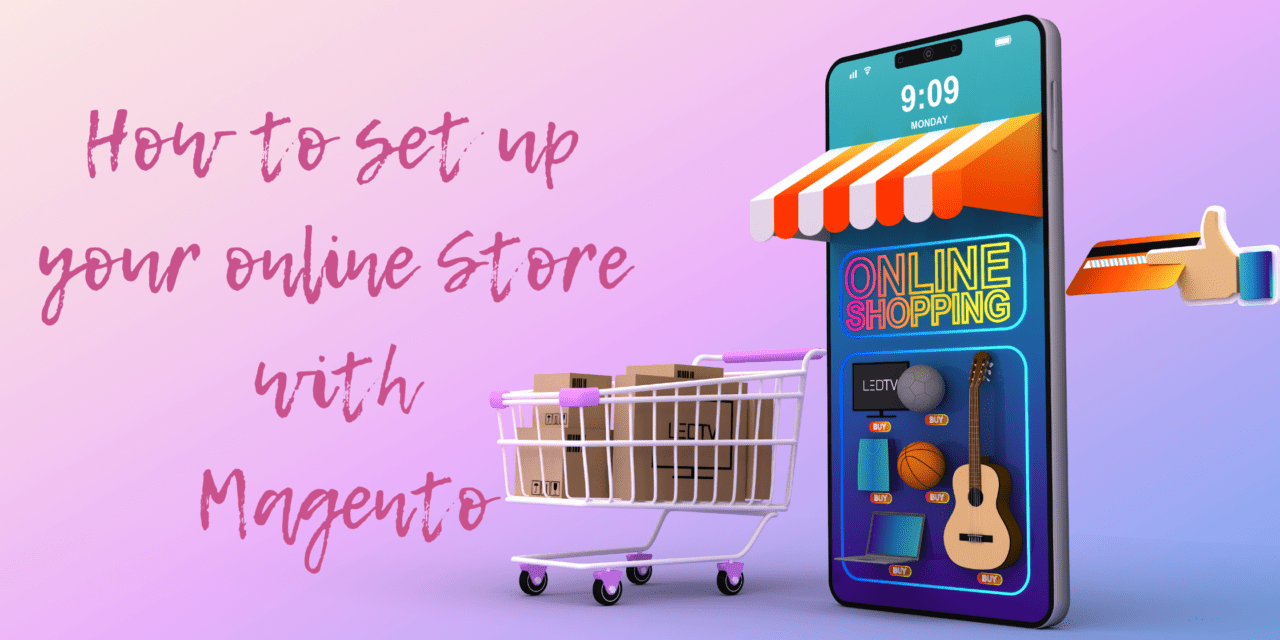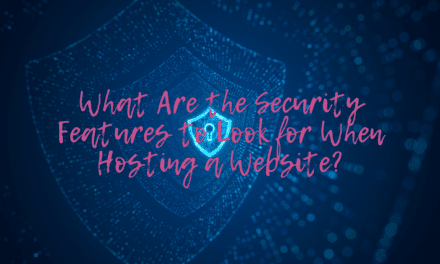As people gradually become regular online shoppers, businesses, and individuals in the buying and selling industry must look into ecommerce. They must find ways by which their products would be presented to potential buyers surfing the internet.
One of the ways, and probably the best way to start ecommerce, is to own an online store. Online stores are websites on which you advertise your products and make them available for buying.
Interested buyers can visit your site, browse your products, and pay for them without meeting you physically or visiting your brick-and-mortar shop. The good thing about this is that you don’t have to learn coding or website designing to build an ecommerce site today.
Anyone can use some tools to create a stunning and responsive online store, whether with a computer skill or not. We’ll be discussing Magento, one of the best ecommerce platforms available on the web.
This article will be a long one, so the table of contents is below. You can click any sub-topics to navigate to any section of the report. You can skip the other areas and go straight to the setup guide if you’re already familiar with Magento.
Table of Content
- What is Magento?
- Who should use Magento?
- Magento 1 or Magento 2
- Difference between Magento open-source and Magento commerce
- Features of Magento
- Pros and Cons of Magento
- Setting up an ecommerce store using Magento
What is Magento?
Magento is an open-source code software owned by Adobe that enables merchants and businesses to create stunning ecommerce websites. The software is simple to utilize and requires no special skills to understand. With Magento, anyone can build a responsive online store.
This tool gives online marketers complete control over their sites’ customization, functionality, and Content. It means that you can design your store to your taste and have it proclaimed your business to anyone that visits. You could also modify its functions to create fantastic shopping experiences for your buyers.
There are themes, plugins, and extensions to improve its functionality. You can integrate third-party apps for analytics and performance tracking.
It is an ecommerce platform built to support growth. You can go from the free, open-source Magento to Magento commerce.
Who should use Magento?
Magento is a tool for ecommerce merchants and businesses that:
- Want to reach more people interested in their products, and generate more sales
- Need an online store that can be managed without hiring a tech-savvy
- Want to use the most popular and ranked ecommerce software to build their online store
- They would like to host their site on a good server that promises peace of mind when there is much traffic
- Need an ecommerce solution that can handle your business growth
- Need a platform that supports integration with third-party apps and sales channels
- Want software that has a massive community of users on social media where they can get solutions to their problems and answers to their questions
- Want to build their online store using a tool that guarantees the security of their site and data.
If you have any of these desires for an online store, Magento is the right software for your business.
Magento 1 or Magento 2?
If you’ve been researching this topic for an extended period, you must have come across terms like Magento 1 and 2. Do not be confused; they are different versions of the software.
Magento 2 is the new, improved replacement for Magento 1. The second version is developed to correct all the faults in the first version. The latest is better on all levels.
It beats Magento 1 on website performance, speed optimization, third-party app integration, checking out processes, security, architecture, design, and simplicity.
Presently, customer support is no longer available for businesses on the first version. They have all been advised to upgrade to the second version of the software.
Magento 1 should probably not be out there anymore. But if you’re to choose out of the two options, go for the second version. ecommerce is more effortless and exciting with Magento 2.
Difference between Magento Open Source and Magento Commerce
The Magento open source and the Magento commerce are two of the three packages offered by Adobe.
The open source is free to download but will require a hosting service and a domain name to make it live and accessible on the internet.
This means that the only cost of operations are payments for hosting, domain name, and an SSL certificate.
Magento Commerce, formerly known as Magento Enterprise, is the real deal. It promises sales, lead generations, and business growth.
It comes with additional features and supports such as a business intelligence dashboard, customer segmentation, visual merchandising, etc.
The cost for this service depends on the business’s Average Gross Sales Revenue. The base cost is $22,000 and could reach $125,000.
The top subscription tier is Magento commerce cloud. The plan comes with hosting on the most secure and reliable AWS hosting. You will also have your SSL certificates and Content delivery network (CDN) handled by Adobe. It costs at least 40,000 per annum and could go high to around $190,000, depending on the business’s Average Gross sales revenue.
Small businesses are good to go with the Magento open source. It comes with the basic features needed to create a stunning and responsive ecommerce store. All you need to do is transfer the downloaded files to your server and use Magento page builder to set up your online store.
Big businesses could also benefit from the open source. It’s just that they might need to hire programmers to make some changes and improve the site functions in the future.
A business must be buoyant financially to consider the Adobe commerce subscription. It will inevitably scale their business performances. An ecommerce platform that supports Artificial intelligence web solutions and analytics like Magento are pretty scarce.
Start with the open source if you’re confused about which one to choose. You can later upgrade to the commerce subscription plan after you’ve tested and approved the platform.
Key Features of Magento ecommerce software
Magento is an all-in-one ecommerce package for internet marketers. The following are the features packed into the website development service.
-
Catalog Management
In ecommerce, quality cataloging is quite essential. Your catalog would determine the kind of shopping experience your visitors will have. A good one should engage them to the point of purchase and perhaps provide suggestions until they find something that suits their needs.
Magento is built with this in consideration. With this software, you can develop an ecommerce store that supports the selling of all physical and digital products. Buyers can download digital products such as books and music.
You can also manage your inventory effortlessly without any struggle. Product design and uploading have never been this more straightforward in the history of ecommerce marketing.
-
Fully SEO supportive
As you strive to give your visitors the best experience on your site, it’s essential that you also consider how to improve your website visibility to attract traffic.
SEO is the long-lasting and less expensive path to website visibility. However, it becomes easier to build your store using a site that supports and provides all tools needed to run a successful SEO campaign.
Magento provides a service that generates Google sitemaps. It readily gives your website a faster loading speed because it minimizes the usage of .css and .js files. The platform will ensure that all your URLs are SEO friendly and that your store populates in SERPs for popular searches and requests.
-
Mobile-Friendly site
A more significant percentage of online shoppers are purchasing using their mobile phones. For this reason, your site must be optimized for mobile users. To attain this, Magento is an exemplary service. The web development service ensures that its sites are built using the latest, improved, and generally accepted HTML 5.
Mobile users will get the same wonderful experience as those on their computers. They will be able to have access to all the products, videos, and images on your website. Whether they are on Android or IOS, they will be able to make purchase decisions without any doubt because they have accessed all the product information on your site.
-
Checkout, shipping, and payment
Before picking a site development service for your ecommerce business, this is another key area you should look into. If you’ve researched well, you would know that the best should support one-page checkout, must be able to ship multiple products in just one order, and provide security for both front-end and back-end orders.
These are just some of the qualities of Magento. The platform checkout services include estimating the cost of shipping cart tax and shipping for shoppers, order tracking, and PayPal integration for payment.
-
Comprehensive reports and analytics
No other website needs comprehensive reports and analytics like the ecommerce stores. They need it to measure sales, gather leads, and decide on the next move. Therefore, Adobe understands and built Magento to provide users with the best reporting system.
Magento uses Google analytics, one of the best on the web. Google Analytics will provide users with accurate figures of their website traffic and reports on other parameters for determining the performance of your ecommerce business.
There’s also a separate report for sales and tax. Others include product review reports, abandoned shopping cart reports, and low stock reports.
Pros of Magento
- Magento provides a page-builder that enables users to create a beautiful site for themselves without the input of a website designer or programmer.
- You can design and edit the store to your taste.
- Timely and up-to-date reporting for performance measurement and decision making
- SEO friendly for quick ranking on SERPs
- 24/7 customer support and a large community of users
Cons of Magento
- It can take a while to understand and use the software
- Magento commerce is quite expensive
Setting up your online store with Magento
Magento can prove hard to set up if you’re trying to do it for the first time. Most significantly when you don’t have a guide to follow. Don’t worry if you’re new to this website-building thing. Below are the steps to follow to successfully set up a Magento ecommerce website.
But before we commence the process, go ahead, and create a Magento user account. The account is necessary, and very soon, you will need to grab some information from the portal. This is a different portal and not the site you’re about to develop.
Reviews Magento’s server requirements
As explained above, except if you subscribed to the Magento Commerce Cloud, you would find a hosting company that will provide a server for your ecommerce store. However, you must be careful about which one to pick because Magento has criteria for a standard and supportive server.
In that case, you must check Magento server requirements before you decide on a hosting platform. Some of these requirements include.
- Linus x86-64 operating systems, and other Linus distributions such as Red Hat or Ubuntu
- The Web server can either be Apache 2.4 or NGINX 1. x
- Ram of at least 2GB. If less, the user must consider creating a swap file
- A database designed using MySQL versions 5.6 and 5.7
- A server that operates on PHP version 7.
Decide on a hosting platform and appropriate domain name
You can choose a web host for your online store now that you know the requirements. Most of the available ones presently provide the tools needed to host Magento. However, it’s safer to select one that advertises and supports a one-click installation for Magento. The popular among them are SiteGround, Hostinger, and A2hosting.
Before you make payment for the server, you must check if the plan you selected offers an SSL certificate. And would be nicer if they provided a CDN, it would help significantly with your site loading speed.
At this same stage, you must register a domain name. Most hosting also provides domain name services, and some would even include it in their hosting packages. You can get it from your hosting company, but it’s safer to get it from a domain name provider like GoDaddy.
Choose a domain name that’s unique and relevant to your store and products. Make sure it’s an address that’s simple to memorize. After purchasing, assign the domain address to the space you bought on a hosting company server.
Download and Install the Magento Open Source
The last step is synonymous with purchasing land in an estate and putting a signpost on it to indicate that you’re the owner. The land is your space on the web hosting server, while the estate is the internet, and the signpost is your domain name. You can now proceed to build your website, but before then, you need construction tools and materials.
In this case, the tools and materials are the Magento open-source code. You can get this by going to the Magento Adobe website and downloading the file. On the home page of the site, click Resources. You may be required to fill in some details, after which you will be prompted to a page that displays a chart that shows and compares the features of Magento open source and Magento commerce. Below the table is one button that says, “Download Open Source.” Click it.
There will be instructions on downloading and installing the software on the new pages. You need not worry about the first step because we have already considered it in our first step. However, you may need to get an authentication key first before you can download the composer metapackage.
You can download the archive files by clicking Quickstart install in the left sidebar of the Installation guide page. But mind you, the files will be downloaded on your computer and not your server. For this reason, this method is only used by programmers and website designers that build websites on their computers using a local server. The files are later transferred to an internet server using FTP.
Now, you see why we recommend choosing a host that supports the one-click installation of Magento. You will avoid the stress of using FTP to transfer the files to your purchased server by selecting one. The way to go about the download is quite different if your host offers a one-click download option. In this case, log in to the c-panel of your server and click Magento to download the files.
Configuring administration settings
If you downloaded the archive file, there would be a way you can import the files from your computer and then install it on your server. But since most people are using hosting companies that support one-click installation, we would assume you already have the files on your server at this stage.
However, before installation, you will be required to set your admin username and password. You will be asked to do this just after initiating the installation process. After which, you will specify the part on your server where you want Magento installed and the URL path to your admin login page. Once the settings are configured, you can now proceed to install Magento on your server.
After the installation, click the admin installation URL and log in using the details you set earlier. You will be prompted to the Magneto dashboard, where you can start building your ecommerce store.
Browse, select, and install a theme for your online store
The theme is the first thing you want to set up on your online store. The theme is the foundation of your online store, on which you will lay every other part of your site. You’re not to create it. There are lots of them on the Magento marketplace, and you must go in there and select one suitable for your ecommerce store.
But before then, you need to grab an access key from the account you created before starting this downloading and installation process. You will need this key to access the marketplace, and you can find it by going to this path (Marketplace>>my product>>Access key) on the portal.
Once you’re in, generate new keys by clicking on create new access keys. Then, copy your private and public keys and return to your Magneto store; go to Settings>Web setup wizard>Extension manager. In the extension manager, paste the keys you generated.
Now, every theme you purchase on the marketplace will automatically appear on the extension manager of your ecommerce store. You can either get a free theme or buy one on the marketplace. When you choose a free one, make sure you add it to your cart and check out to make it available on your extension manager.
You can now head back to your extension manager on your store to install and enable the new theme. And do some box checking’s.
Customize the theme and add some extensions
Here comes the fun time. This is the moment you’re waiting for to be able to create additional colors and functionality for your site, just like a programmer or a website designer. This is the stage in which you design and add more content pages. To begin, navigate to the Content>>Configuration section of your Magento admin.
After adding your logo and setting your header and footer, you can navigate to Content>>element, where you make changes to your pages and widgets. You can also edit blocks that serve as the structure of your site.
You can now focus on improving your website functionality when you’re satisfied with your site’s structure and set all the main pages like the about us, our history, and our goals pages. The functionality can be enhanced by downloading extensions and third-party apps from the Magento Marketplace. The process is the same as with downloading and installing the theme.
Your choice of extensions is up to you, but you should get an app each for security, analytics, shipping, and payment getaways for a start.
Configure your site settings
It would help if you made some setting configurations before you start adding products to your store. Those settings can be found by going to store>>Settings>>Configuration. There are lots of items here to configure, but the most important ones for a start include:
- Time zone, location, and currency
- Business email for receiving transaction notifications
- Customer account settings
- Shipping and payment settings
- Price scope
Note: Some extensions need some settings to function effectively. You could also make these settings at once and configure how you want them to operate on your site.
Upload product images and prices on the product page
Go to catalog>>Products on your Magento store admin. The new page is a table where you will insert your product details. To add products, click the Add product button in the top-right corner of the page.
The table is simple to understand. What may give you a little tough time is the product type. The product type could be simple products, virtual, configurable, grouped, bundle, and downloadable products.
The simple product is the physical products, while virtual and downloadable products are e-books or products that don’t require shipping. Group products can be purchased separately or together, and the bundle types can only be purchased individually. Ensure you select the correct categories for your products.
Products information like the name, price, Stock keeping unit (SKU) number, and product images are essential. Others like weight, dimensions, and stock quantity are optional. After adding all your products, hit the save button. Also, toggle on the product online switch to make all products live and online.
Set your payment and shipping options
Perhaps, you haven’t set this while configuring your store settings. You should return to your website admin setting section to specify your payment and shipping options. It’s imperative because it determines whether a potential buyer will complete the purchase or not.
The payment settings are in the sales section of the collapsible menu situated on the left side of the page. Set as many payment options as possible. You can also expand the possibilities by using extensions.
The Magento shipping platform has been shut down for quite a while on the shipping aspect. However, you can always set one by using extensions. Ensure you check the extension documentation to ensure how to correctly integrate and select the shipping platform of your choice.
Preview and make your store live
Having done all the necessary steps, you can now preview your website using a browser. Just type the website’s address in the URL provided space of a browser and press enter to visit it.
Suppose you’re a developer and have been developing this site locally. The next thing to do is transfer all the files to the purchased server using a File Transfer Protocol (FTP) client. After which, you can preview it to see how it looks.
Conclusion
Without any doubt, Magento is the right platform for creating an online store. It’s simple to use and offers all the tools required to run a successful ecommerce business. Stores built using these tools are beautiful, mobile-friendly, and good for SEO.
If you want the best shopping experience for your customer, choose Magento today.








